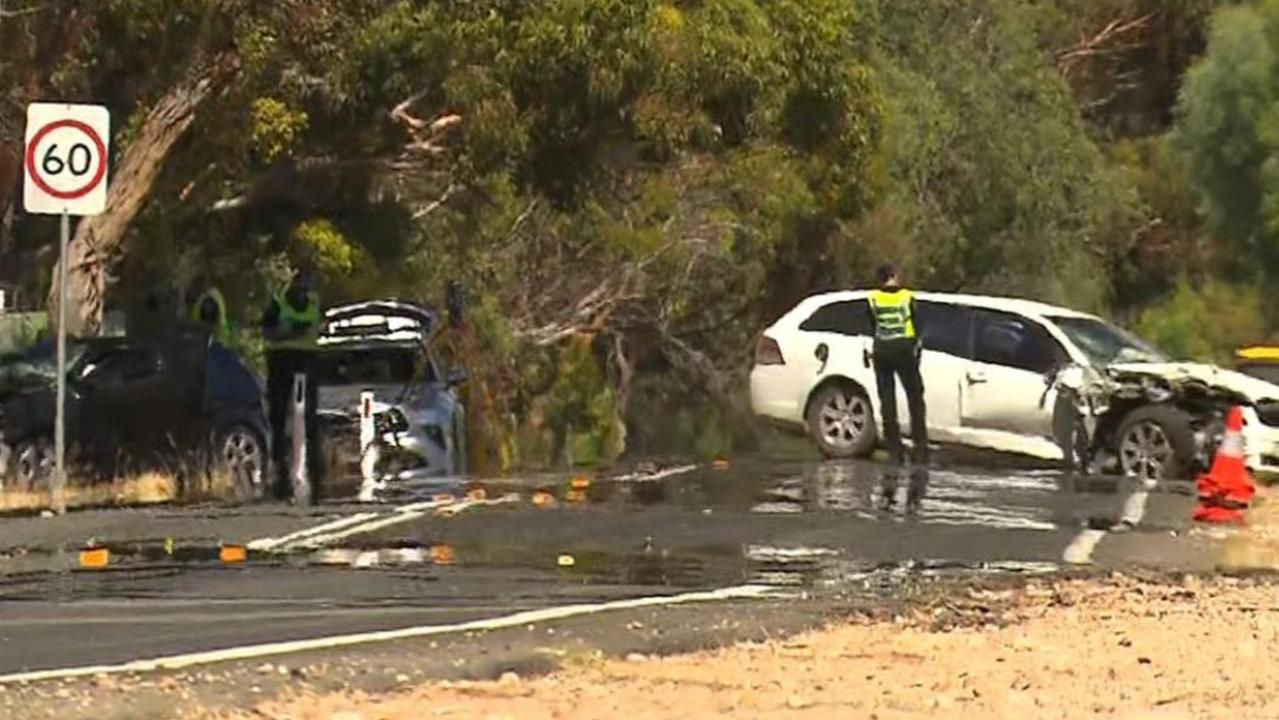St Kilda mangrove destruction revealed in Alex Mausolf pictures
A photographer’s bird’s-eye view of the dying St Kilda mangroves has produced confronting proof of the area’s rapid decline.

SA News
Don't miss out on the headlines from SA News. Followed categories will be added to My News.
Shocking new images of the mangrove die-off at St Kilda have been released by the group formed to save them.
Save St Kilda Mangroves Alliance photographer Alex Mausolf said the community was anxious to know how the State Government planned to prevent further damage.
“There just hasn’t been any community consultation or explanation of what’s actually going on,” he said.
“Nobody can understand why or how they can get away with it.”
At least 10ha of mangroves and 35ha of saltmarsh died late last year, after disused and dry salt evaporation ponds were filled and then slowly leaked.
But it’s estimated that more than 150ha of vegetation is stressed.
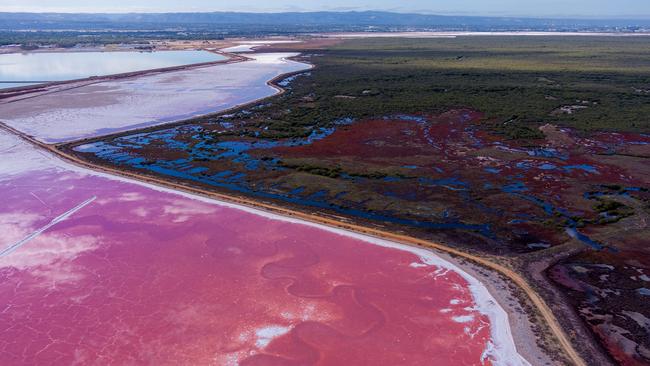
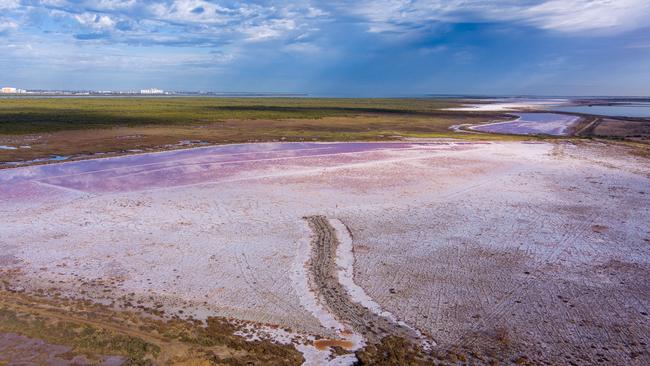

The Environment and Water Department is currently leading research to map and monitor the condition of the affected vegetation in the area.
“Historic and new remote sensing data from satellites, planes and drones is being used in conjunction with on-ground vegetation assessments, to map dead and impacted vegetation,” a spokesman said.
“These analyses will allow DEW to assess the current extent of impact, and track changes in the extent of impact through time.
“These analyses will be used to inform the community and stakeholders on the extent of the impact to the mangroves and saltmarsh habitats adjacent to the ponds, and enable the assessment of vegetation remediation and recovery in the future.”
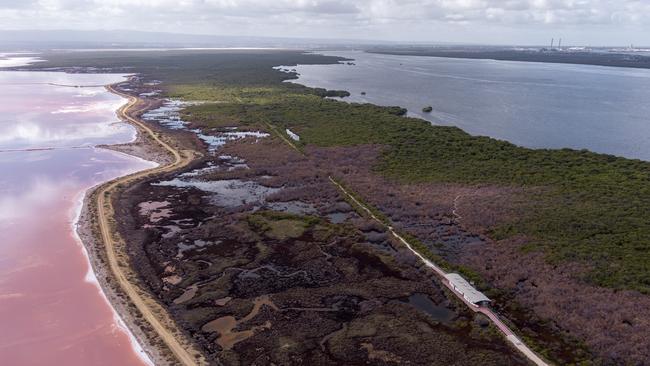
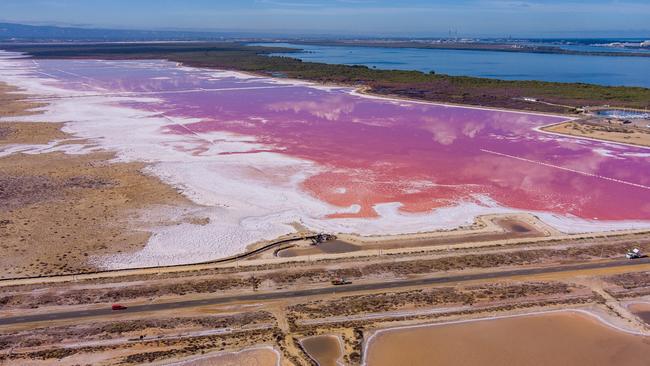
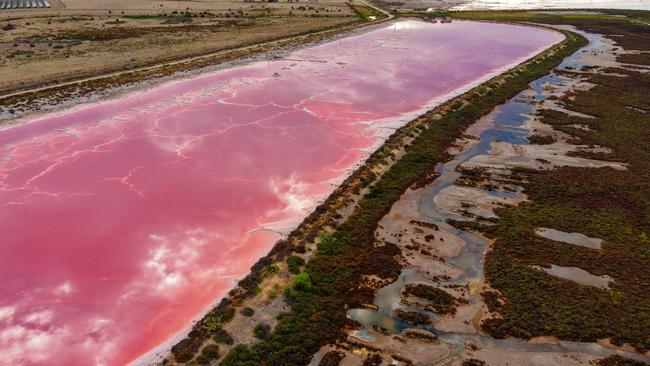
Andrew McGrath, from Airborne Research Australia, is part of the team effort.
“What’s happening now is the hypersaline water from the ponds is still leaking from the ponds into the mangrove area,” Dr McGrath said.
“And so a significant area of the mangroves has already died, and a lot of an even larger area of the mangroves is under significant stress.”
On Monday, the Energy and Mining Department announced new pumping equipment at the site would accelerate the movement of water over coming months.
A spokesman said the department continued to consult with the community to discuss the remediation and recovery process. (Read the full statement below).
Meanwhile, the Save St Kilda Mangroves Alliance said it was surprised to spot footage of the dead vegetation in a promotional video for a new housing development in Buckland Park, known as Riverlea.

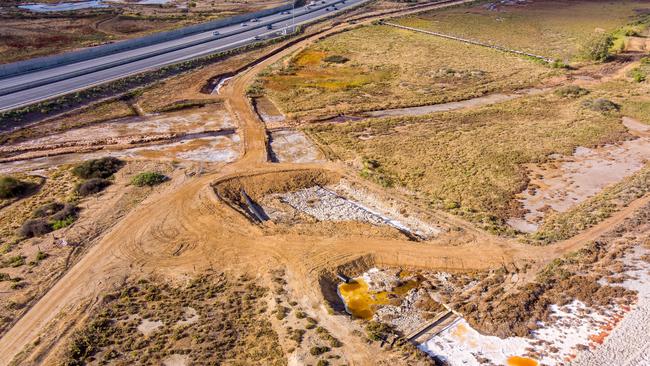

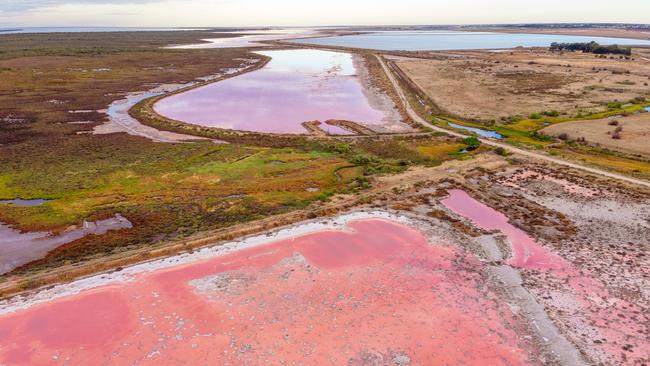
MANAGING A COMPLEX SITE: OFFICIAL GOVERNMENT RESPONSE
The Dry Creek salt fields are in four main sections which stretch 30km from north to south.
The operator of the salt fields, Buckland Dry Creek Pty Ltd (BDC), is continuing to focus on re-establishing the holding pattern in the northern section, which includes increasing the pumping of new seawater into these ponds.
As the pumping of seawater continues, water will move through the northern ponds and discharge back into the gulf, via Environment Protection Authority (EPA) licenced discharge points, restoring the holding pattern and the stability of the northern ponds.


Water within the southern sections of the field is being moved by pumps away from the vegetation impact area and in accordance with the Clean Up Authorisation issued on Monday 1 March, the state government will install additional pumps to accelerate this movement of water. This will assist the existing actions being taken to prevent further environmental harm to the mangrove environment adjacent to the Dry Creek salt field.
A summary of the existing holding pattern regime is available in the currently approved operational plan (PEPR) on the DEM website.
Representatives from the Department for Energy and Mining, EPA and Department for Environment and Water (DEW) continue to regularly consult with the community to discuss the remediation and recovery process for the St Kilda mangroves.
SOURCE: Department for Energy and Mining



